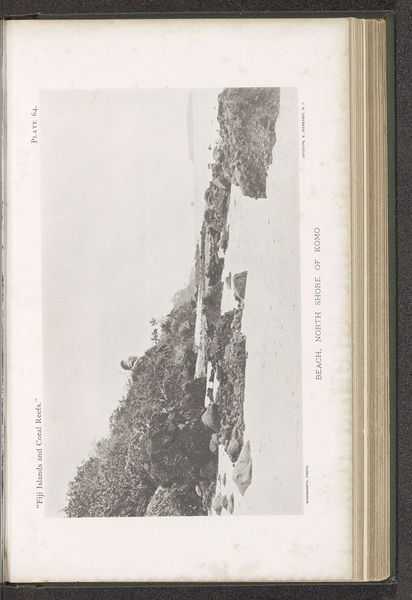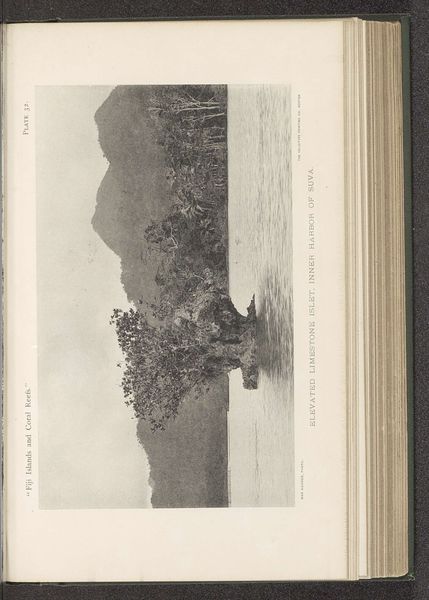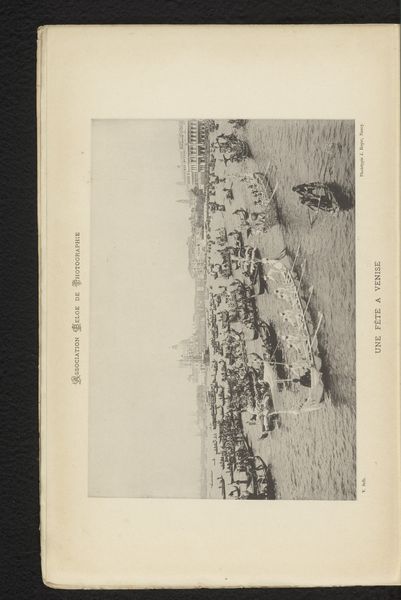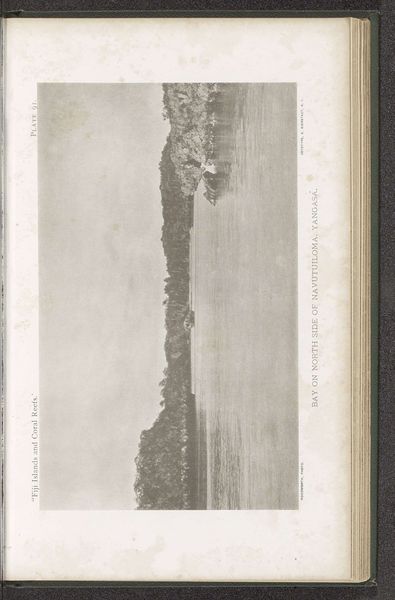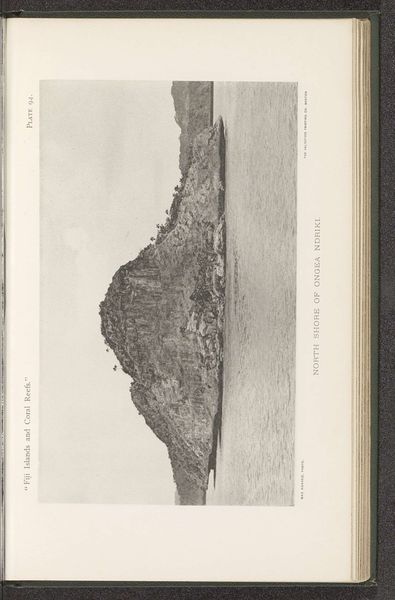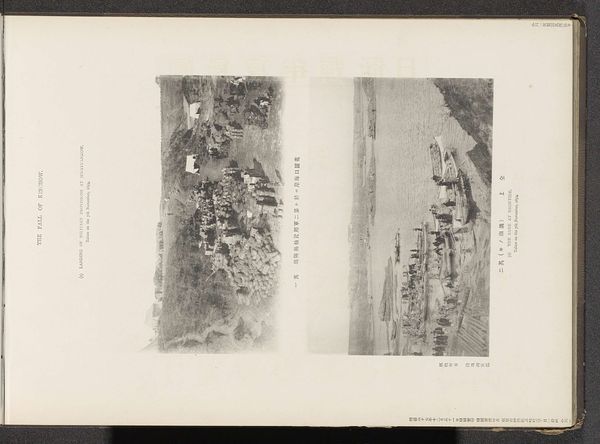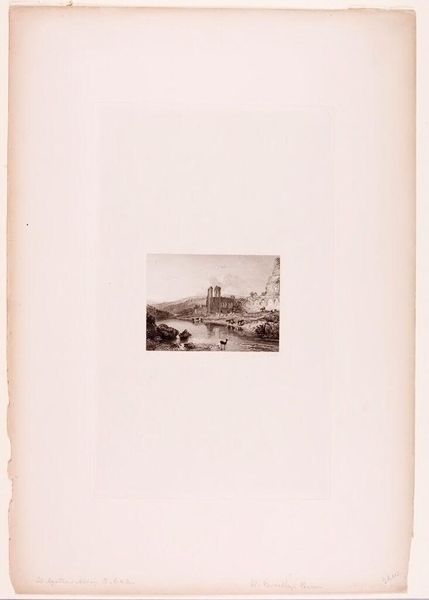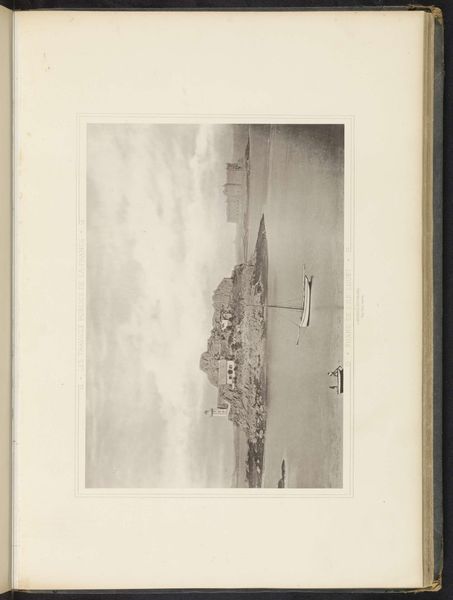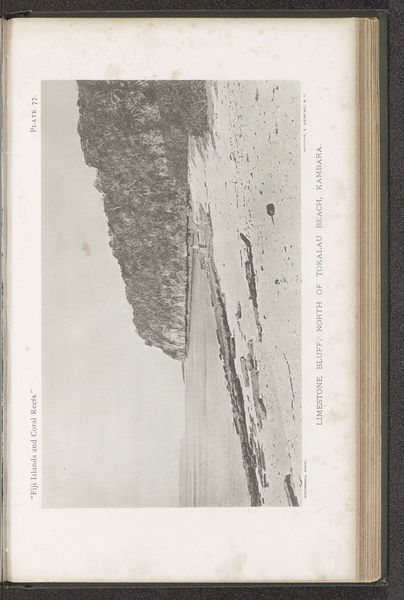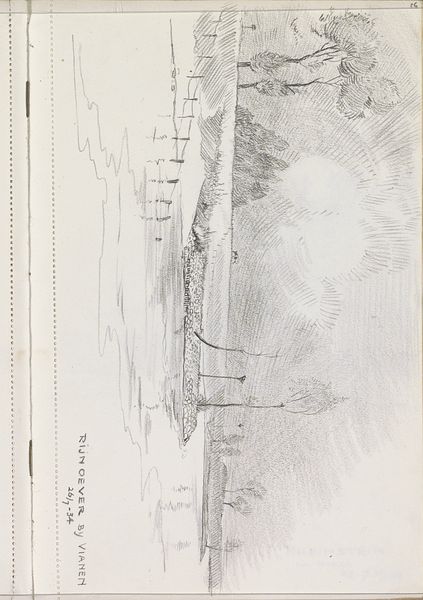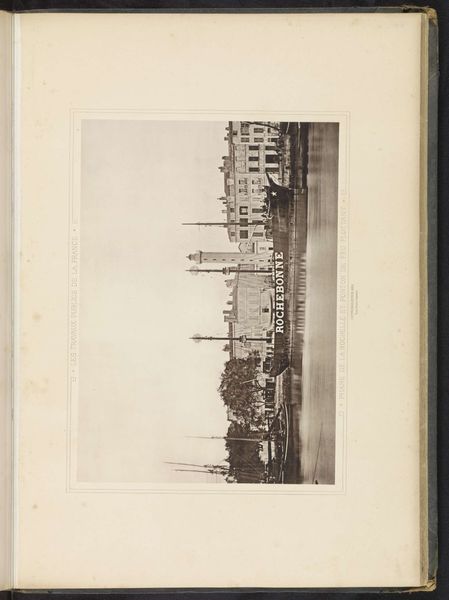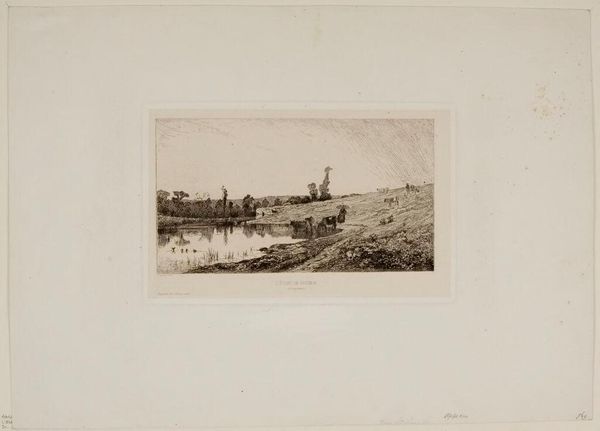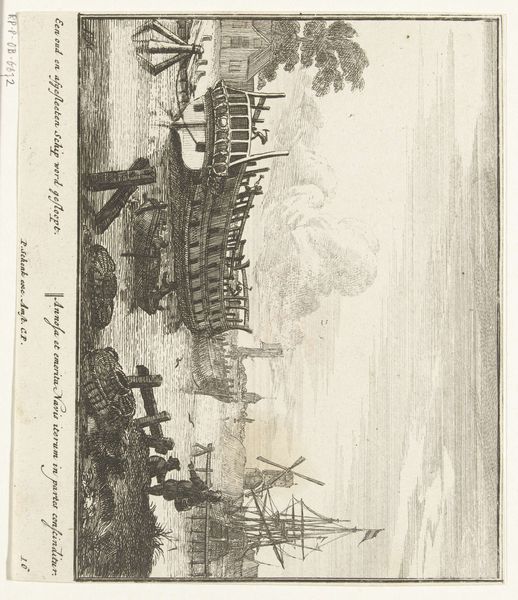
photography, gelatin-silver-print
#
landscape
#
photography
#
gelatin-silver-print
#
realism
Dimensions: height 108 mm, width 179 mm
Copyright: Rijks Museum: Open Domain
Curator: So this gelatin-silver print by Maximilian Agassiz, taken before 1899, shows us an islet in a bay near Yangasa Levu. What strikes you initially about this photographic landscape? Editor: Immediately, there's this hushed, almost spectral quality. The light is so soft, it seems to erase any sharp edges, making the rock formations and the still water blend together in a wash of gray. Curator: Precisely. Agassiz, though employing realism, uses light in a way that subtly departs from strict representational accuracy, bordering almost on an ethereal depiction. The texture, rendered by the gelatin-silver process, seems to emphasize the granular essence of the landscape itself. Notice the vertical thrust of the composition, emphasized by the sharp, upward angle? Editor: It's as if the camera is craning its neck, attempting to capture the islet's defiant posture against the horizon. I imagine this upward visual pull would also be heightened by the limitations of the camera during this period. There appears to be an inscription or labeling of the photograph within the original image, as well as information alongside it that disrupts the continuity of the artwork's field of view. Was it difficult to photograph under those circumstances, given its composition and perspective? Curator: Likely. Consider also what is included: the way he frames the reflection of the rock face in the water—it is a deliberate compositional technique that plays with duplication and near symmetry to disrupt the viewer's perspective. Editor: Yes, it gives an impression of infinity and makes one question where the land stops and its mirrored reflection begins. This isn't just documentation; it is definitely an aesthetic contemplation. There is some tension between the desire to accurately document a land that appears alien with the impulse to translate that information into romantic and imaginative expression. Curator: It certainly holds a conversation, or perhaps even a struggle, between the factual and the romantic, between seeing and feeling. Agassiz has handed us a landscape that remains delicately poised between reality and something akin to a waking dream. Editor: Absolutely, I am eager to see how our listeners respond to that tension.
Comments
No comments
Be the first to comment and join the conversation on the ultimate creative platform.
